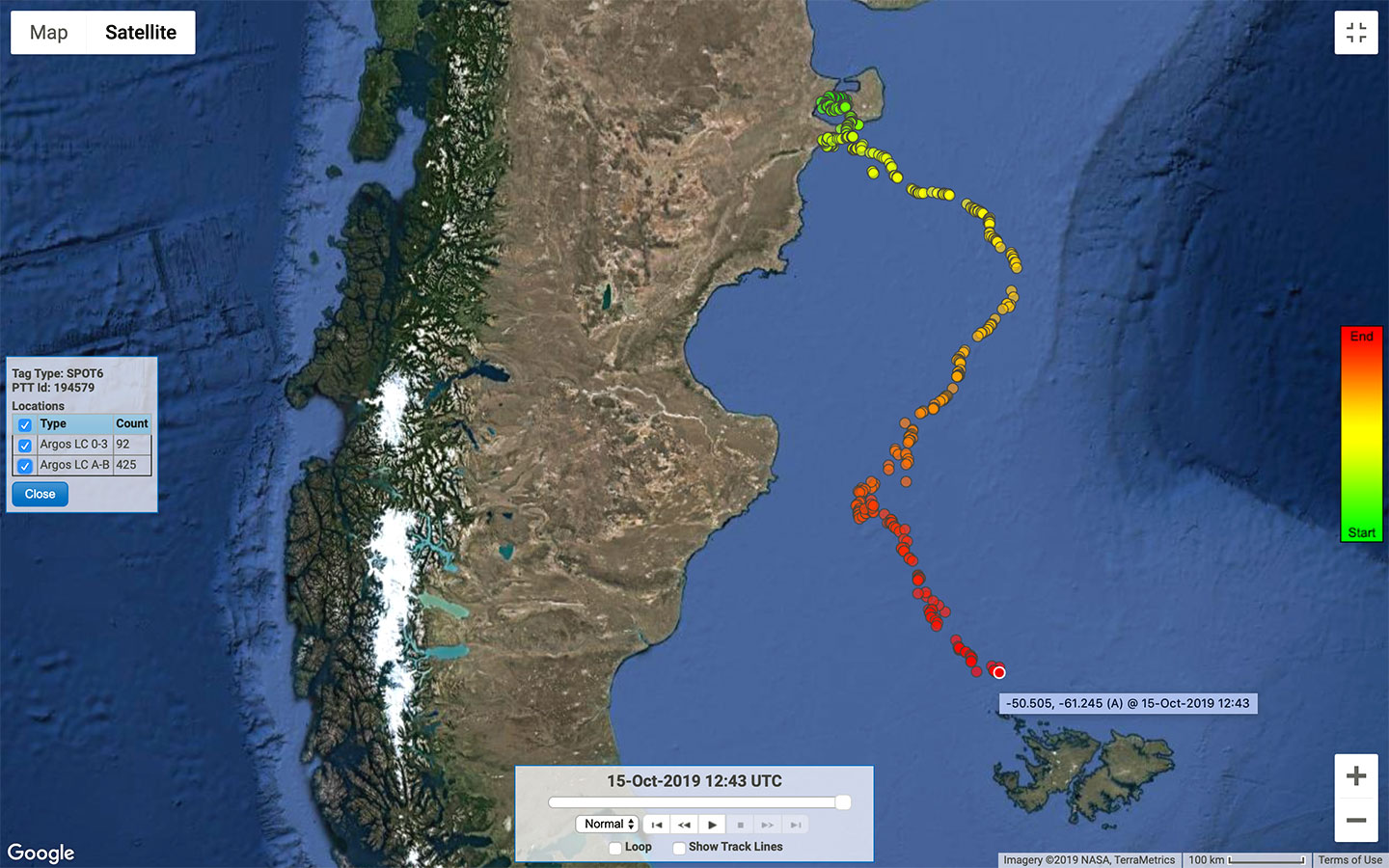Photo: N. Lewin
69’s 187 day tracking route (22,304 km)
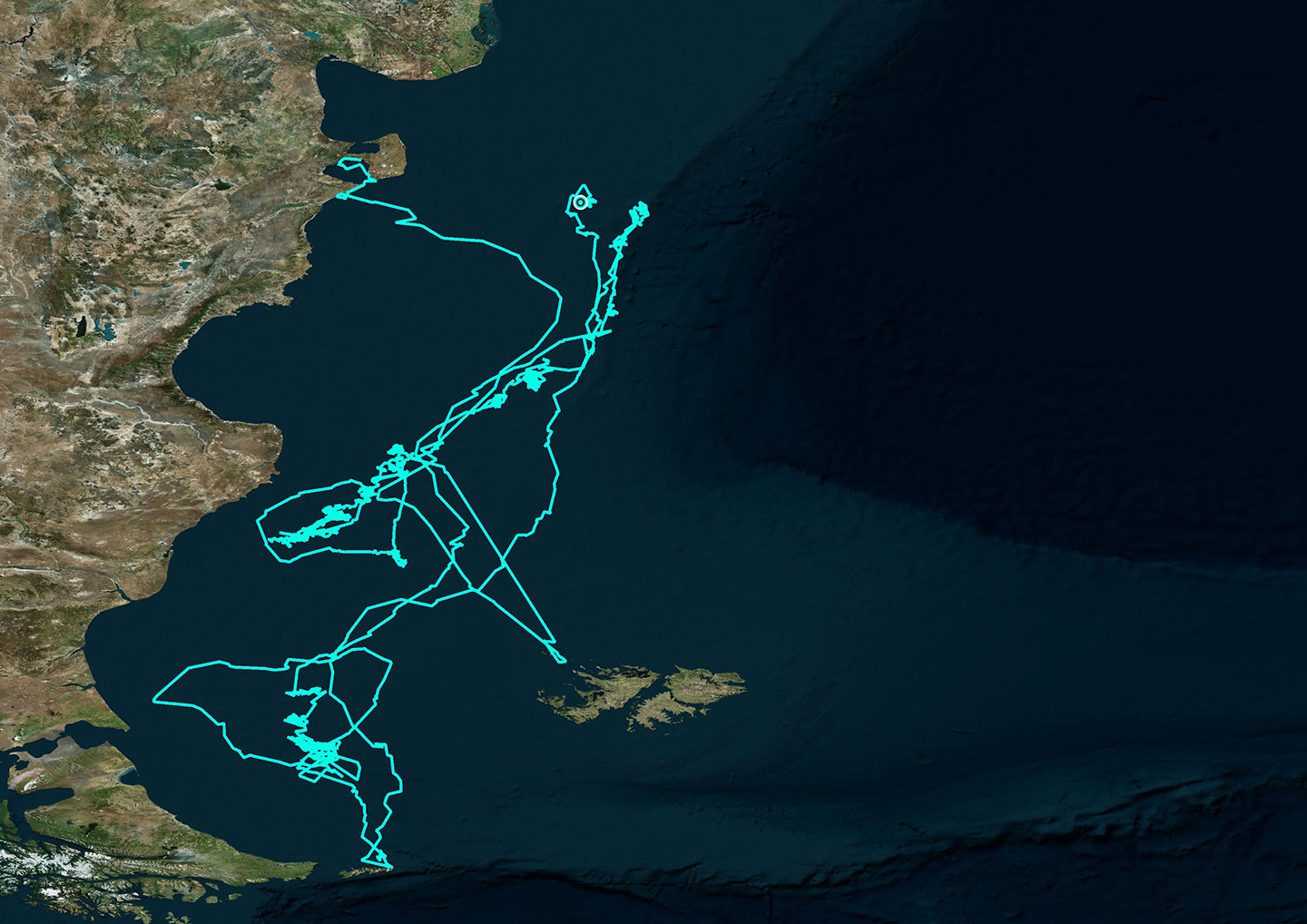
March 24 – March 28, 2020
A few days back, this adult male arrived in an area of the continental shelf where both Paciencia and Cebollita were feeding. On March 28, after 187 days, we lost connection with “69’s” tag. Since he was tagged in the waters of Golfo Nuevo, “69” traveled exclusively over the Argentine continental shelf, from Península Valdés to the northern part of Isla de los Estados (Staten Island), returning this week to the same approximate latitude from which he started his journey many months ago.
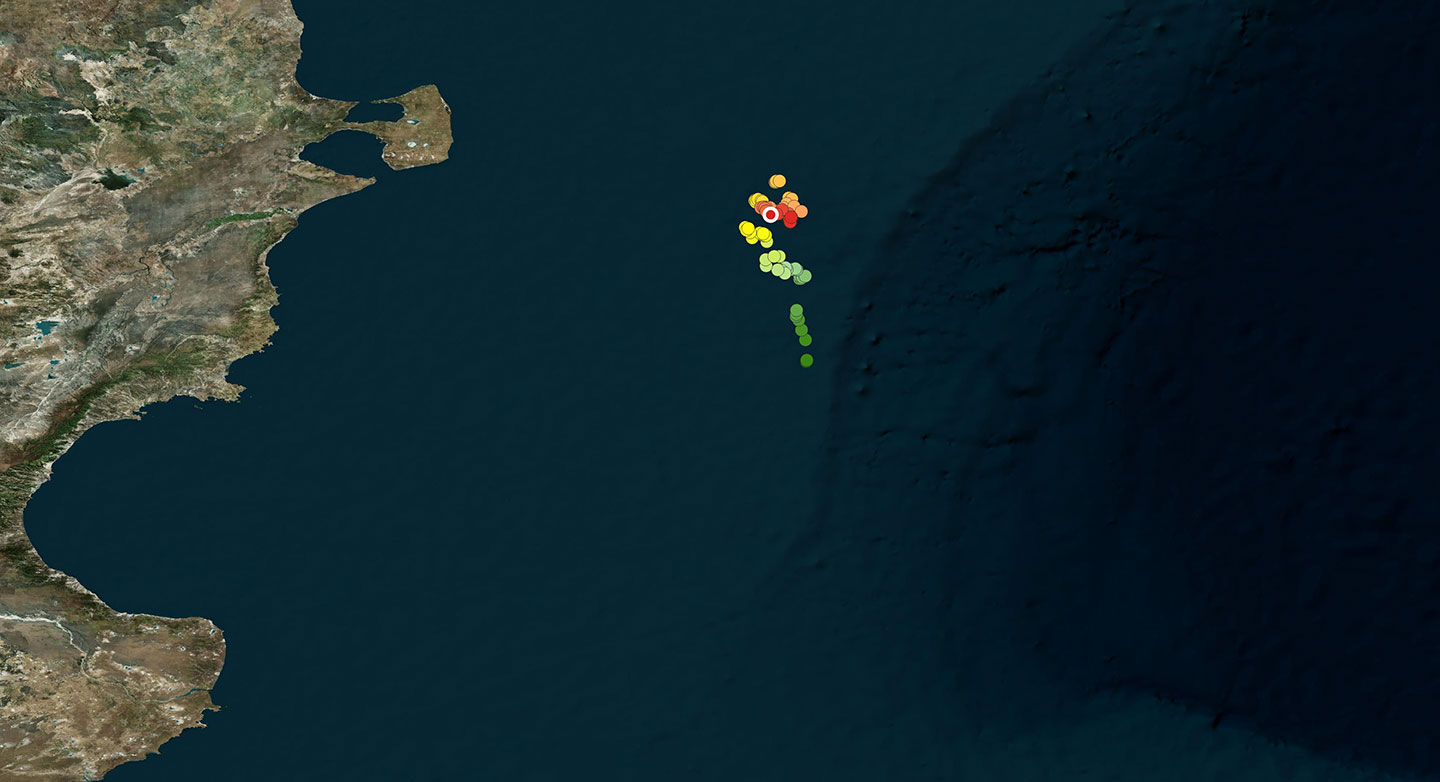
March 17 – March 23, 2020
This solitary individual is the only whale who traveled a great distance (650 kilometers) this past week. Leaving an area to the northwest of the Malvinas (Falkland) Islands in the far south of the continental shelf, this whale traveled north following the edge of the continental slope off the Golfo San Jorge, until he reached the area where both Cebollita and Paciencia are, east of Golfo Nuevo.
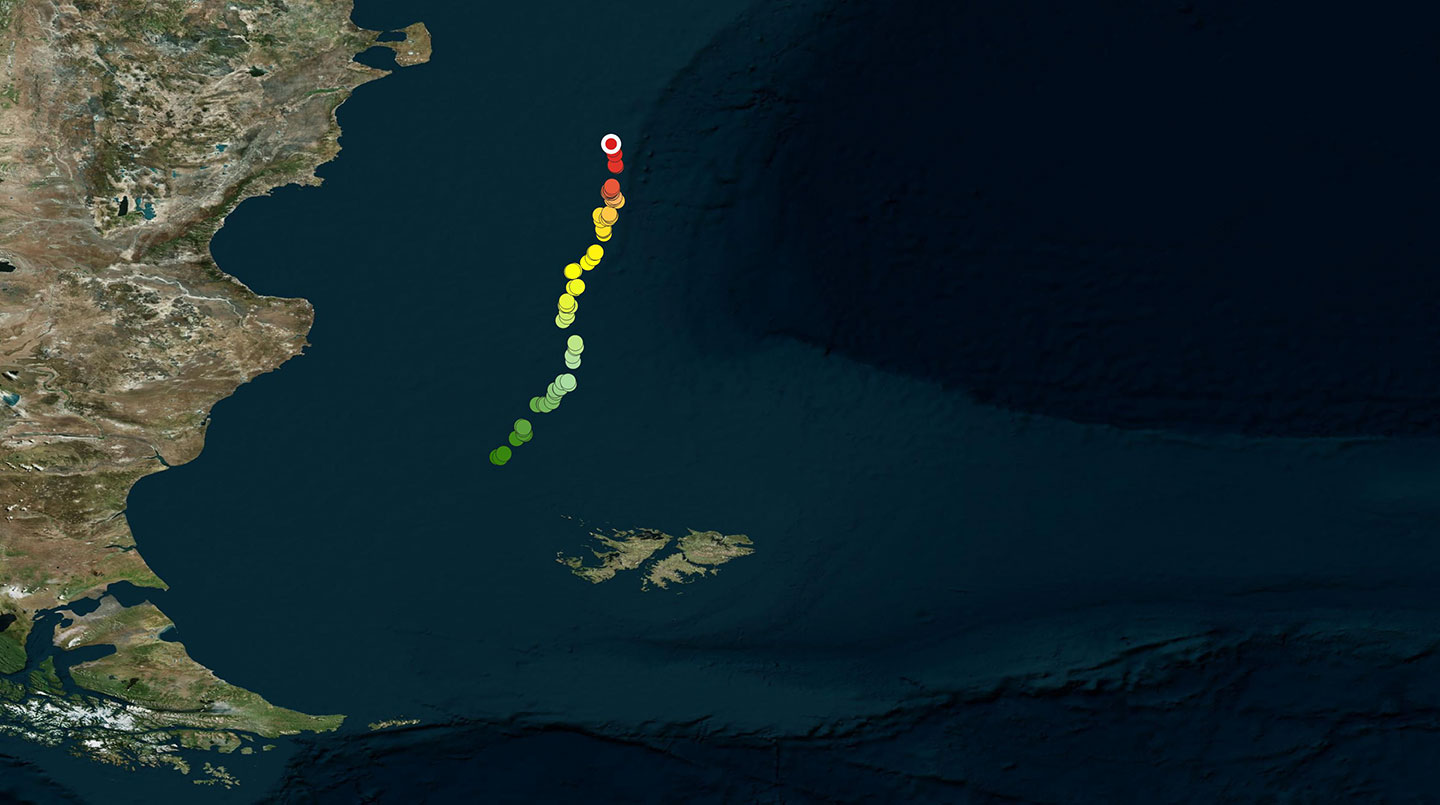
March 11 – March 16, 2020
This week “69” left the area around Staten Island and traveled 700 kilometers northwards over the continental shelf. Could this solitary individual have begun its return trip to the protected waters of the Gulfs around the Peninsula Valdés?
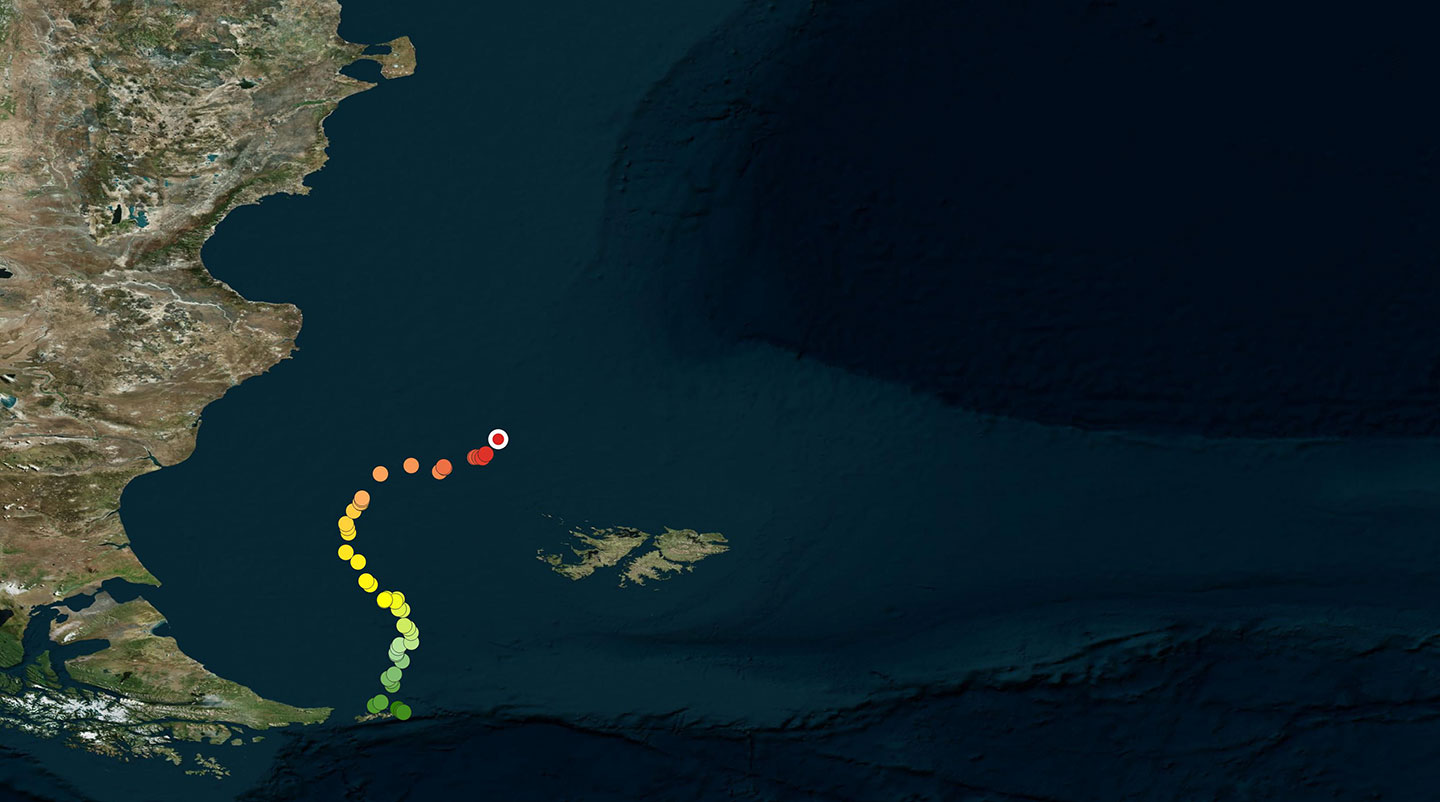
March 04 – March 10, 2020
During this week “69” left the sector of the continental shelf where he had been and traveled south on a “Z” shaped route to the north of Staten Island, where Metido was a few days ago.

February 25 – March 03, 2020
“69” traveled in a C shaped trajectory this week, traveling first northwest, then south, then returning eastwards over the center of the continental shelf. His permanence in this area indicates the presence of food.

February 19 – February 24, 2020
This adult has been feeding in the same small sector of the continental shelf for the last 20 days.

February 11 – February 18, 2020
Both “69” and Metido continue feeding over the continental shelf between the Malvinas (Falkland) Islands and the mouth of the Straits of Magellan. The abundance of food in this region is due to the nutrients in the cold sub-Antarctic Patagonian Coastal Current (part of the Malvinas-Falkland Current), mixed with low salinity continental waters.

February 07 – February 10, 2020
This adult male has spent the last 10 days in the same section of the continental shelf between the mouth of the Magellan Strait and the Malvinas (Falkland) Islands. “69” is 75 kilometers north of Metido, another solitary individual.

January 29 – February 06, 2020
“69” has stayed in a highly productive area of the southern continental shelf, between the continent at the latitude of the Magellan Strait and the Malvinas (Falkland) Islands. This area was previously used by Metido.

January 21 – January 28, 2020
After spending various weeks feeding off the coast of Golfo San Jorge, “69” traveled south to an area where Metido had been a few days earlier, between the South American continent and the Malvinas (Falkland) Islands.

January 12 – January 20, 2020
“69” has been in the same sector of the continental shelf for the last 15 days, moving short distances towards the southwest. This pattern of movements suggests this adult male is feeding.

January 06 – January 11, 2020
This adult male returned to the continental shelf after spending several days over the continental slope at the latitude of Golfo San Jorge. There is a rich feeding area in that sector.

December 29, 2019 – January 05, 2020
“69” changed his previous northward direction to begin traveling southwards, stopping briefly a few times along his way at the beginning of the week.

December 22 – December 28, 2019
“69” swam 200 kilometers north this week along the edge of the continental slope. He has now stopped traveling and is in the same area as El Gris and Fiesta.

December 16 – December 21, 2019
After swimming for various days, “69” seems to have found food at the edge of the continental shelf. Once there he again met up with El Gris and Fiesta.

December 05 – December 15, 2019
“69” continues to be in the middle of the continental shelf. After spending a few days in what seems to be a highly productive patch, he swam north to another area where he stayed for 7 days. He is now moving northeast. If he continues moving in this direction, he will arrive at the ocean basin where females and calves are feeding.

November 26 – December 04, 2019
This male continues swimming around in the zone in front of Puerto Deseado. In the last days he traveled in an oval pattern, then turned and traveled east. Having observed slower changes in his trajectory and the fact that his positions are closely grouped together, the scientists suppose that “69” is feeding.

November 17 – November 25, 2019
“69” remains in the same zone near Puerto Deseado. This time he traveled a little farther south within an area of about 4,300 square kilometers. He has remained close to Fiesta and El Gris.

November 10 – November 16, 2019
“69” remains in an area 100 kilometers from the coast, close to Fiesta and El Gris. None of these whales show any intention of leaving this area of the continental shelf, where they have been for weeks.
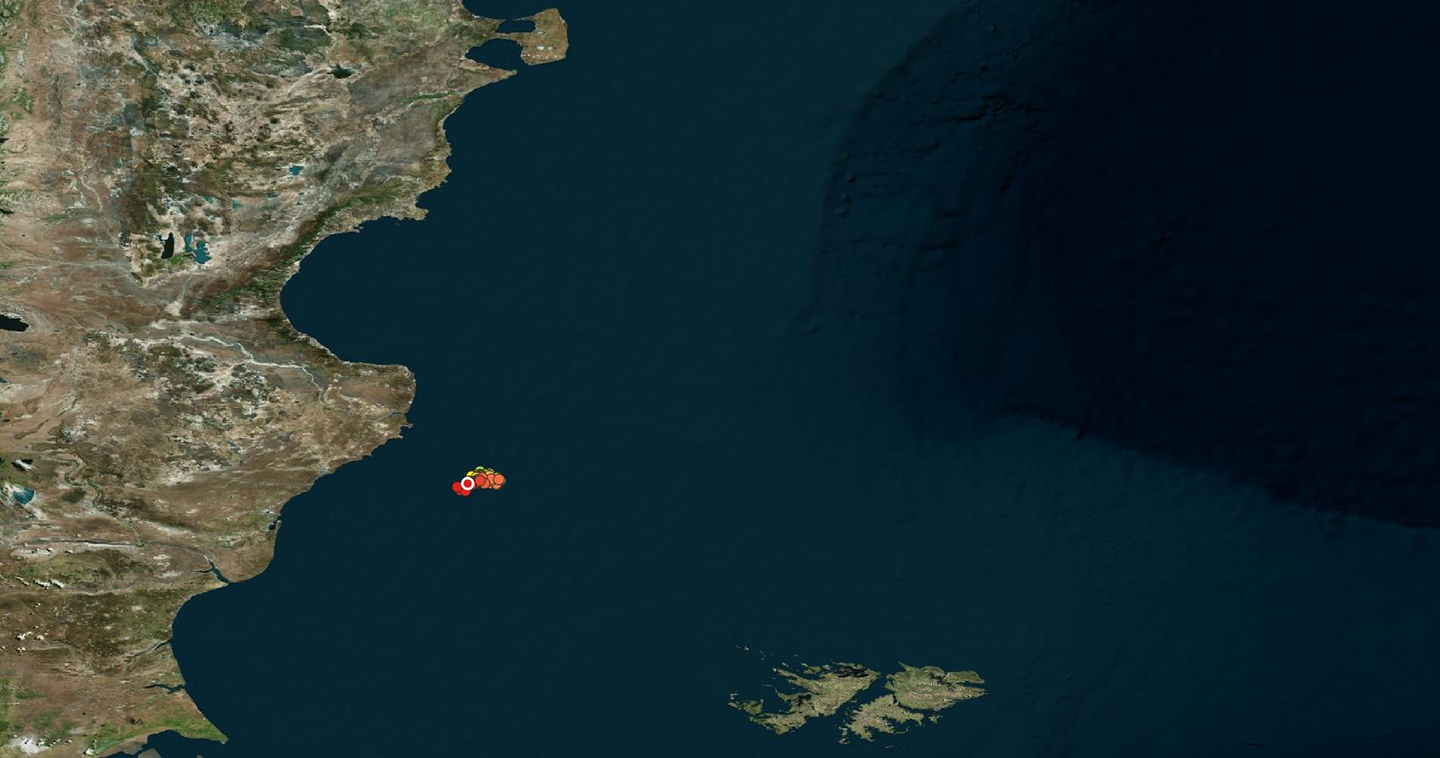
November 2 – November 9, 2019
For the last 20 days this adult male has been in a 10,000 square kilometer area in front of the coastal city of Puerto Deseado. Fiesta, El Gris and Metido also continue in the same area.

October 27 – November 1, 2019
In these last days “69” traveled the same routes as Metido, Fiesta, and El Gris off the coast of Puerto Deseado. The behavior of these adult males raises fascinating questions: are they moving together, or is their meeting accidental? Are they competing for resources, or are they cooperating with each other? Over what distance do they communicate?
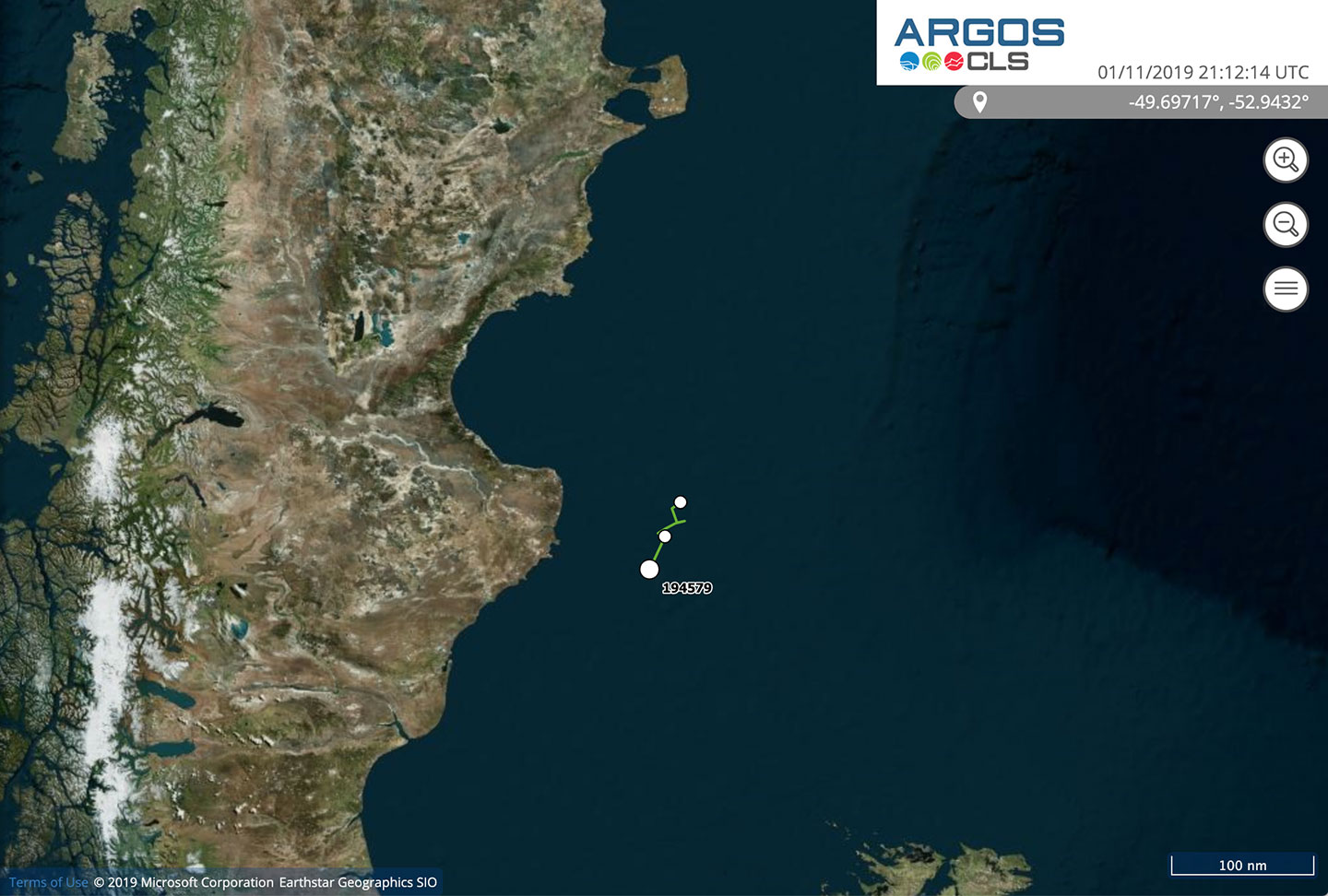
October 16 – October 26, 2019
From the Falkland Islands (Islas Malvinas) “69” returned back northwards some 400 kilometers heading towards the spot where El Gris, Fiesta and Metido are today. This project is providing important information as to the whales’ preferences of specific locations where they prefer to congregate, and where they remain for longer periods. It also permits the identification of high priority marine areas which are critical for the species which live in the Patagonian ocean.

September 23 – October 15, 2019
“69” is an adult male who has had a satellite transmitter attached since October 23. After staying in Golfo Nuevo a week he left the gulf swimming south, and on October 15 he arrived in the zone of the Falkland Islands (Islas Malvinas). In general, the adult males with transmitters stayed in Golfo Nuevo only a short time and some have already traveled large distances in the South Atlantic, whereas the majority of females with calves have not left the gulf.
